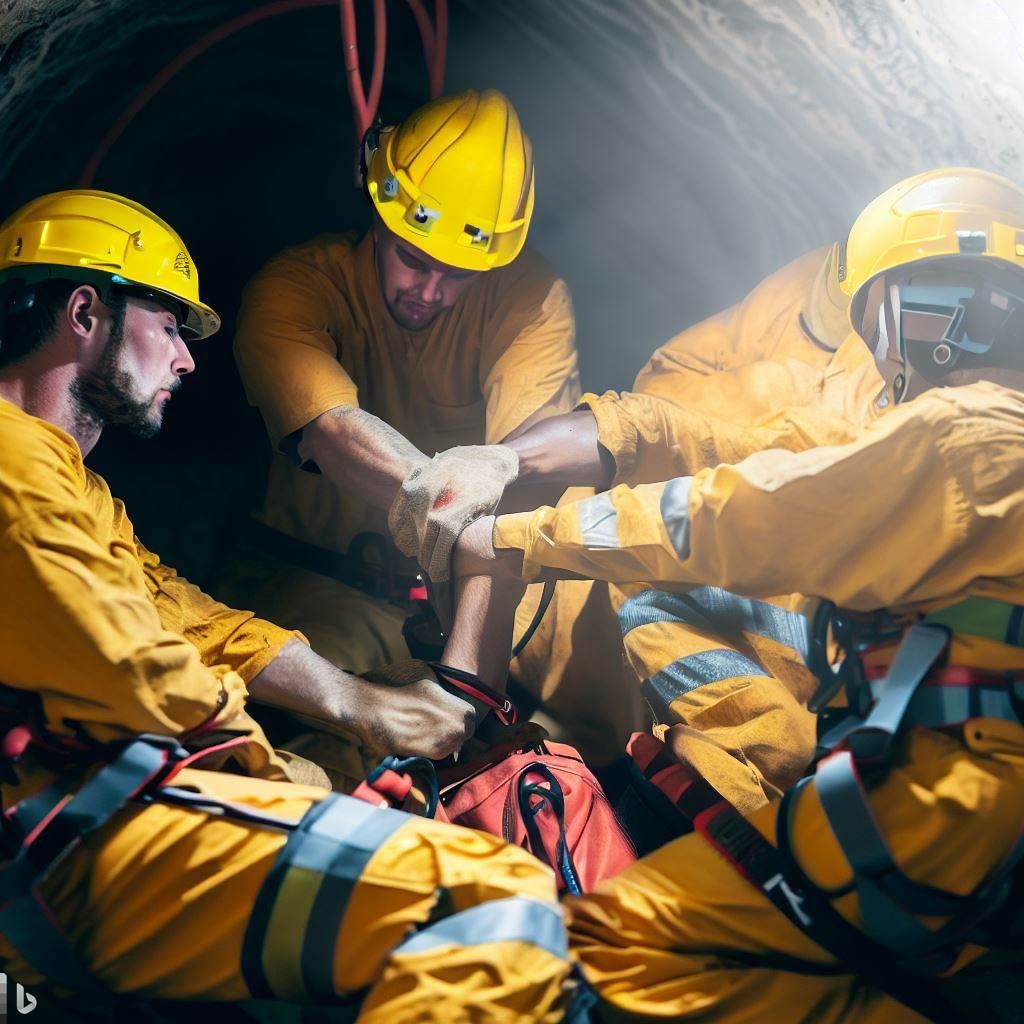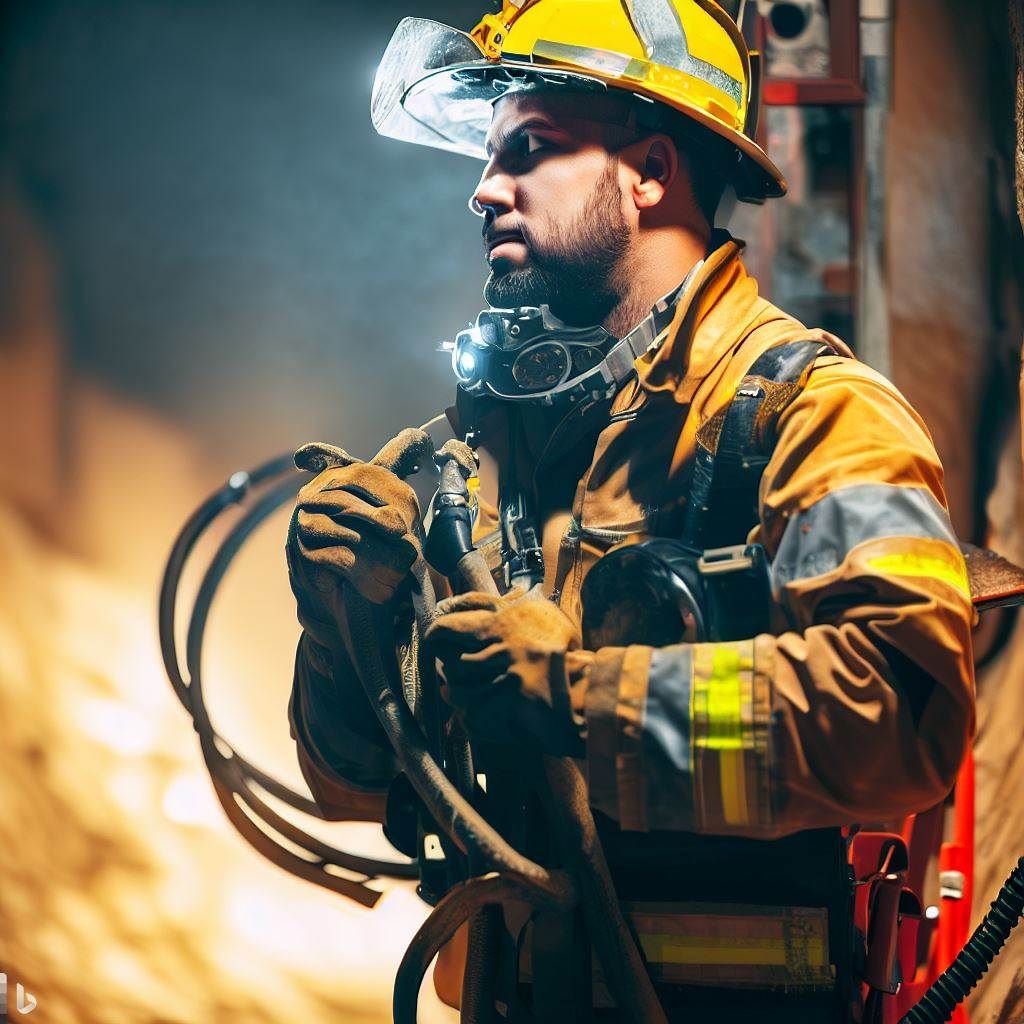Unlocking the Essentials of Mines Rescue Confined Space Training: A Comprehensive Guide
Welcome to the world of mine rescue confined space training, where preparedness and skill development are integral to ensuring safety and efficiency in the mining industry. As an experienced professional in this field, I have seen first-hand how essential and transformative this training can be. It’s not just about learning the ropes; it’s about equipping yourself with the knowledge and skills to respond effectively in high-pressure situations.
Confined spaces in mines are high-risk areas that require specialized training to navigate safely. They are often narrow and hard to exit, which can be deadly in emergencies. Mine rescue confined space training is designed to address these risks head-on, providing miners with the tools to survive and thrive in these challenging environments.
In this comprehensive guide, we’ll explore the nuances of this specialized training, its importance, key elements, how the training process unfolds, the benefits of it, and more. We’ll also delve into some case studies to demonstrate the effectiveness of the training, how to get the training, prospects, and answer some frequently asked questions.
What is Confined Space Training?
Confined space training is a specialized training program designed to prepare individuals to work in confined spaces safely – areas not necessarily designed for human occupancy and has limited entry and exit points. These areas are prevalent in various industries, including mining, where workers must navigate narrow tunnels and cramped spaces.
Mines rescue confined space training goes a step further, preparing miners to work in confined spaces and respond effectively to emergencies within these spaces. It’s a unique blend of technical knowledge, practical skills, and emergency response tactics, all aimed at enhancing safety and productivity within the mining industry.
This training covers several areas, including hazard identification, risk assessment, use of protective equipment, rescue techniques, and emergency procedures. It’s a comprehensive program that leaves no stone unturned when it comes to ensuring the safety of miners in confined spaces.

The Importance of Mines Rescue Confined Space Training
The significance of mine rescue confined space training cannot be overstated. It is a matter of life and death. Mining is an inherently hazardous industry, with confined spaces adding extra risk. Miners are left vulnerable to various potentially fatal dangers without proper training.
This training is important because it equips miners with the necessary skills to identify potential risks, take appropriate preventative measures, and react effectively in an emergency. It’s not just about personal safety; it’s also about ensuring the safety of colleagues. A well-trained miner is a valuable asset to their team, capable of stepping up and taking charge in crises.
Furthermore, this training is a regulatory requirement in many jurisdictions. Compliance with safety regulations helps avoid legal ramifications and contributes to a safety culture within the industry. It makes mining operations more efficient and sustainable in the long run.
Key Elements of Mines Rescue Confined Space Training
Mines rescue confined space training is a comprehensive program that covers several key elements. These include hazard identification, risk assessment, use of protective equipment, rescue techniques, and emergency procedures. Let’s delve into these elements one by one.
Hazard identification is the first step in any safety program. In confined spaces, these hazards might include a lack of oxygen, the presence of toxic gases, fire risks, and more. The training equips miners to identify these hazards accurately and quickly.
Risk assessment builds on hazard identification. It’s about evaluating the potential impact of identified hazards, the likelihood of their occurrence, and the measures needed to mitigate them. It’s a crucial skill that helps miners make informed decisions in high-pressure situations.
The use of protective equipment is another key element of the training. This includes understanding the correct use of various safety gear such as breathing apparatus, protective clothing, gas detectors, and more.
Rescue techniques and emergency procedures form the backbone of mines rescue confined space training—from first aid procedures to complex rescue operations. The goal is to equip miners with the skills to respond effectively and efficiently to emergencies, potentially saving lives.
The Process of Mines Rescue Confined Space Training
Mine rescue confined space training begins with a theoretical understanding of the hazards associated with confined spaces and the safety measures to mitigate them. This is typically delivered through classroom sessions, supplemented by learning resources like manuals and videos.
Next, miners are introduced to the practical aspects of the training. This involves hands-on sessions where they learn to use safety gear correctly, practice rescue techniques, and participate in simulated emergencies. These practical sessions are crucial in reinforcing theoretical knowledge and providing miners with the skills to handle real-life scenarios.
The training concludes with an assessment, where miners are tested on their understanding of the course material and practical skills. Those who pass the assessment are awarded a certificate, recognizing their competence in confined space safety and rescue operations.
Benefits of Undergoing Mines Rescue Confined Space Training
The benefits of undergoing mines rescue confined space training are manifold. At the most fundamental level, it enhances the personal safety of miners, reducing the likelihood of accidents and injuries. However, the benefits extend beyond individual safety.
A well-trained miner is a valuable asset to their team and the mining operation as a whole. They can identify potential hazards, take preventative measures, and respond effectively to emergencies. This contributes to a safer and more efficient working environment.
From a legal perspective, this training helps mining operations comply with safety regulations, avoiding legal ramifications and potential reputational damage. It also contributes to a safety culture within the industry, leading to more sustainable and responsible mining practices.
Case Studies: Effectiveness of Mines Rescue Confined Space Training
Numerous case studies have well-documented the effectiveness of mine rescue confined space training. For instance, one study conducted in an Australian mine found a significant reduction in confined space-related incidents following the implementation of this training program.
Another study, based in a South African mine, demonstrated how the training equipped miners to respond effectively to a potentially fatal gas leak in a confined space. Thanks to their training, the miners could evacuate safely, implement emergency procedures, and prevent a major catastrophes.
These and numerous other case studies highlight the tangible impact of this training, demonstrating its value in theory and practice.
How to Get Mines Rescue Confined Space Training
Getting mine rescue confined space training typically involves enrolling in a course offered by a recognized training provider. These courses are often available in various formats, including on-site training, online courses, and blended learning options.
Before enrolling, it’s important to ensure that the course meets the relevant industry standards and regulatory requirements. It’s also worth considering the course content, the qualifications of the trainers, and the practical learning opportunities offered.
Once enrolled, it’s about maximizing the learning opportunities, engaging with the course material, and applying the knowledge and skills in practical scenarios.

Future of Mines Rescue Confined Space Training
The future of mine rescue confined space training looks promising. As the mining industry continues to evolve and innovate, so does the training. The focus is increasingly on using technology to enhance learning outcomes through virtual and augmented reality tools.
Furthermore, there’s a growing emphasis on continuous learning and upskilling, recognizing that safety training is not a one-off event but an ongoing process. This opens up opportunities for advanced training programs, refresher courses, and professional development opportunities.
While the future is uncertain, one thing is clear: Mine rescue confined space training will continue to be a cornerstone of safety and productivity in the mining industry.
Conclusion: The Vital Role of Mines Rescue Confined Space Training
In conclusion, mine rescue confined space training plays a vital role in the mining industry. It enhances personal safety, improves operational efficiency, promotes regulatory compliance, and fosters a safety culture. It’s a comprehensive program that equips miners with the knowledge and skills they need to navigate the unique challenges of confined spaces.
Whether you’re a miner, a mining operation manager, or a safety professional, this training is an invaluable investment. It’s about preparing for the worst while striving for the best – a philosophy at the heart of the mining industry.
Frequently Asked Questions:
Who should undergo this training?
Anyone working in confined spaces in the mining industry should undergo this training. This includes miners, supervisors, safety personnel, and rescue team members.
How often should the training be refreshed?
It’s recommended to refresh the training every two to three years. However, this may vary based on your mining operation’s specific risks and regulations.
What qualifications do I need to enroll in the training?
Generally, you don’t need specific qualifications to enroll in the training. However, you should be physically fit and capable of working in confined spaces.
Can I do the training online?
Some aspects of the training, such as the theoretical components, can be done online. However, the practical components usually require in-person training.
Is the training recognized internationally?
The recognition of the training varies based on the specific course and training provider. It’s important to check this before enrolling in a course.
